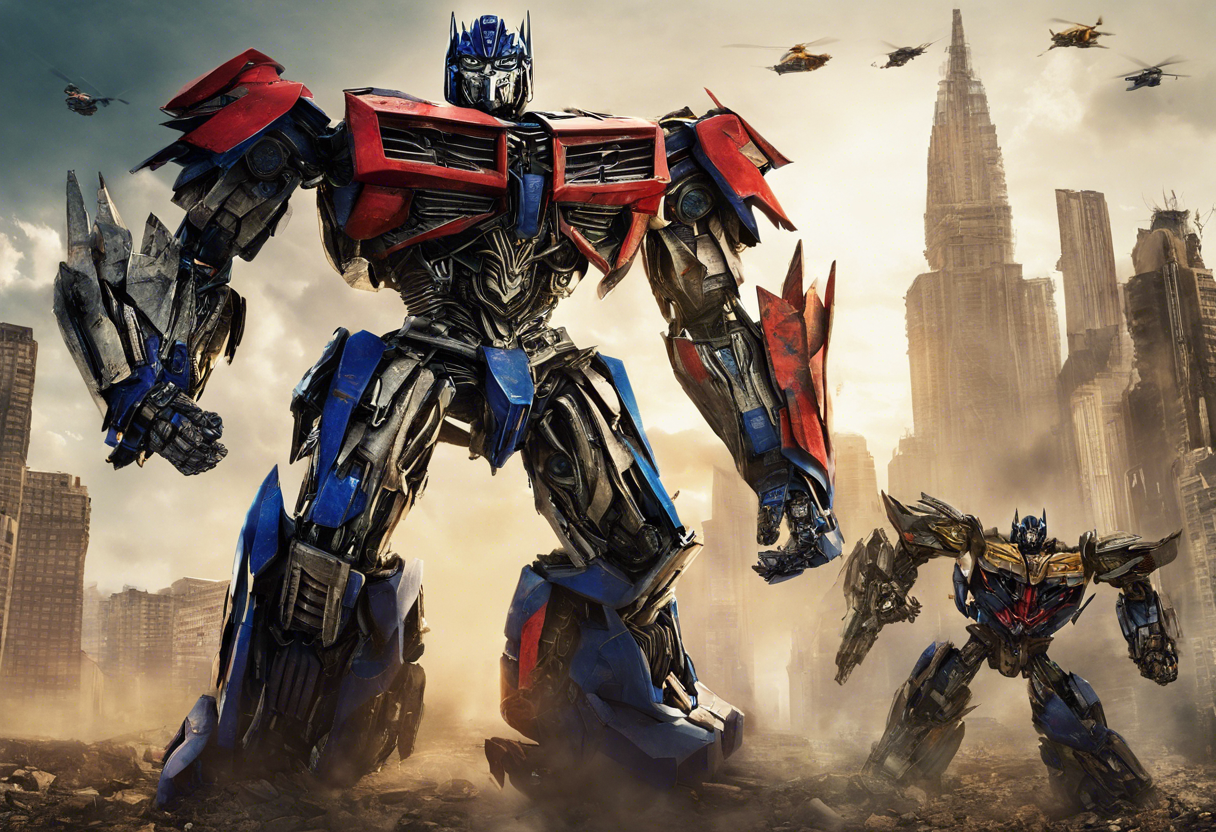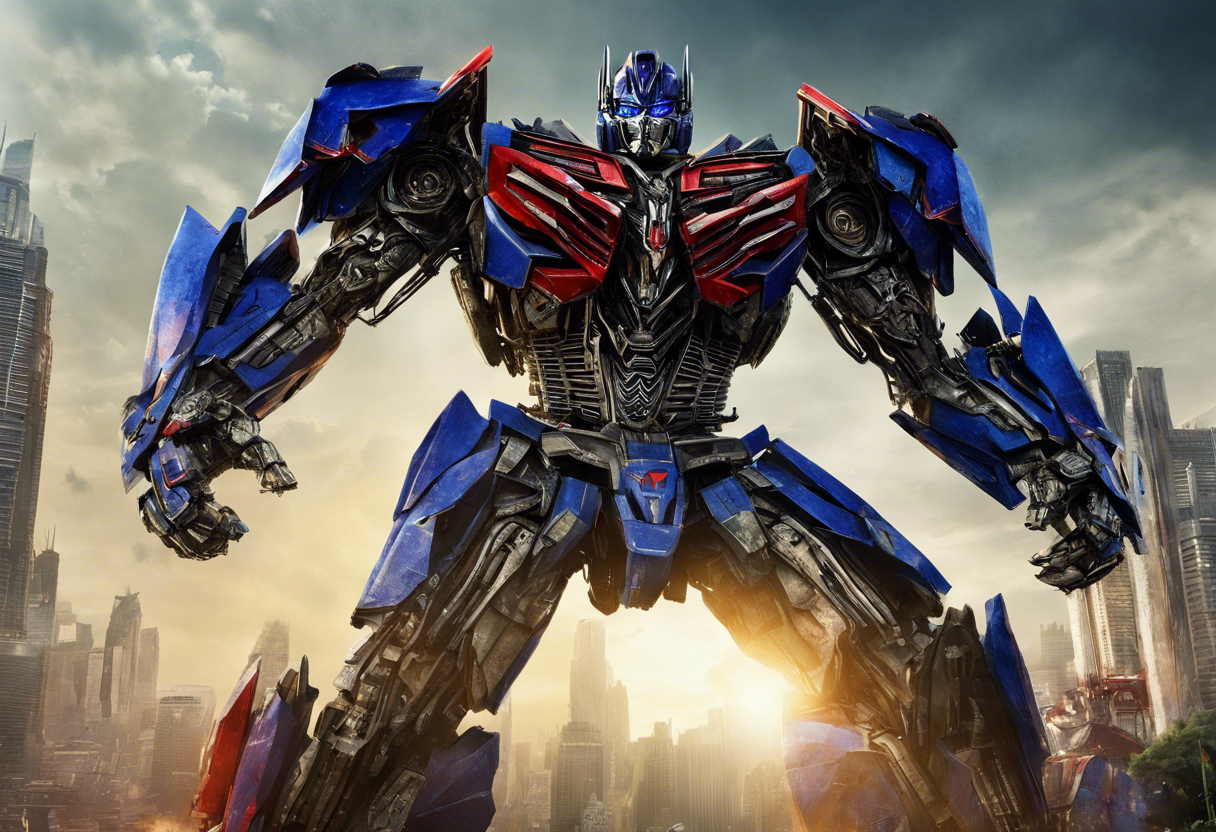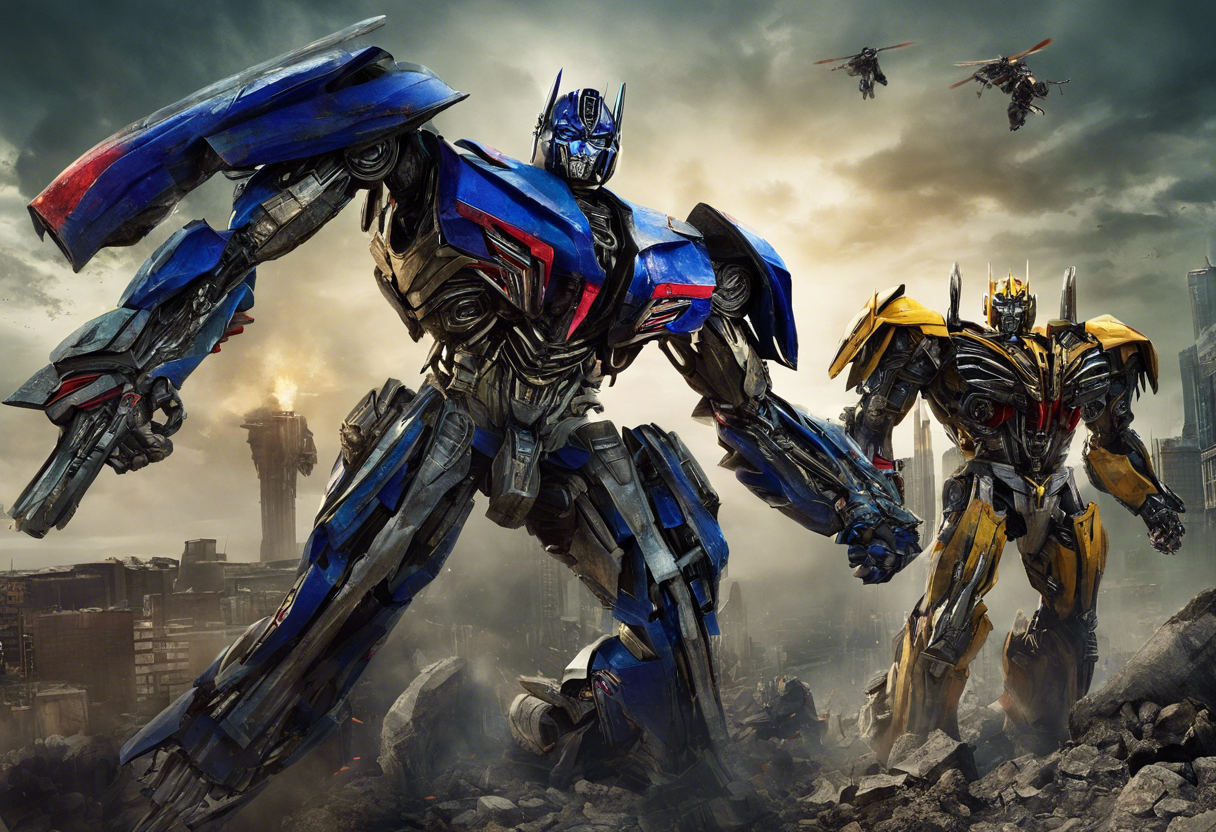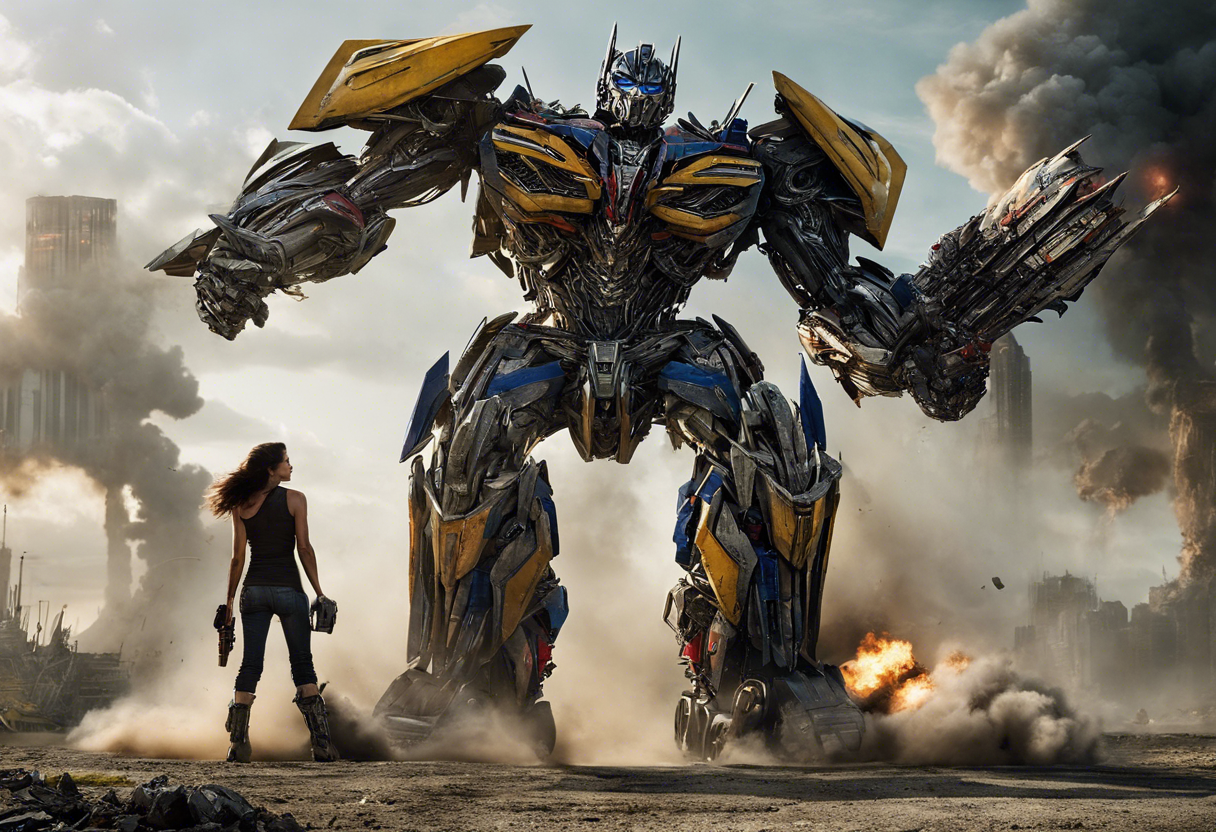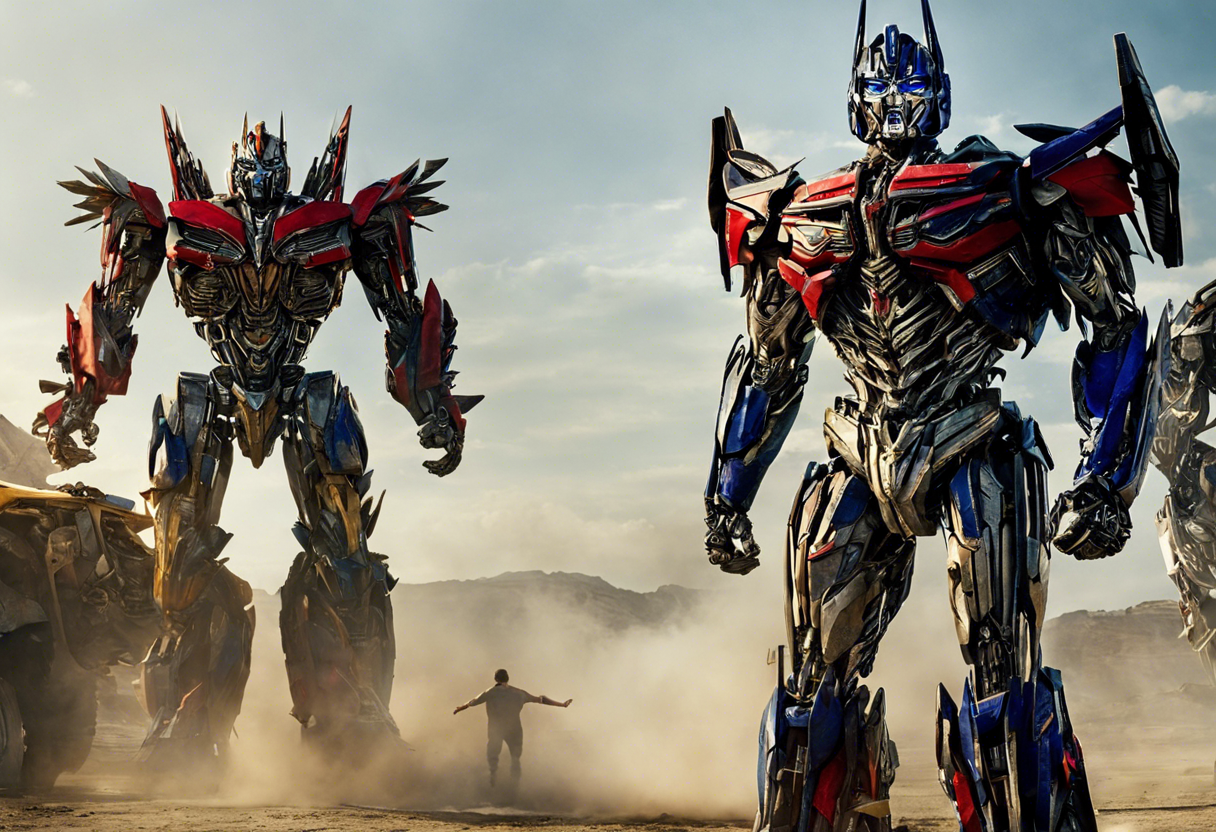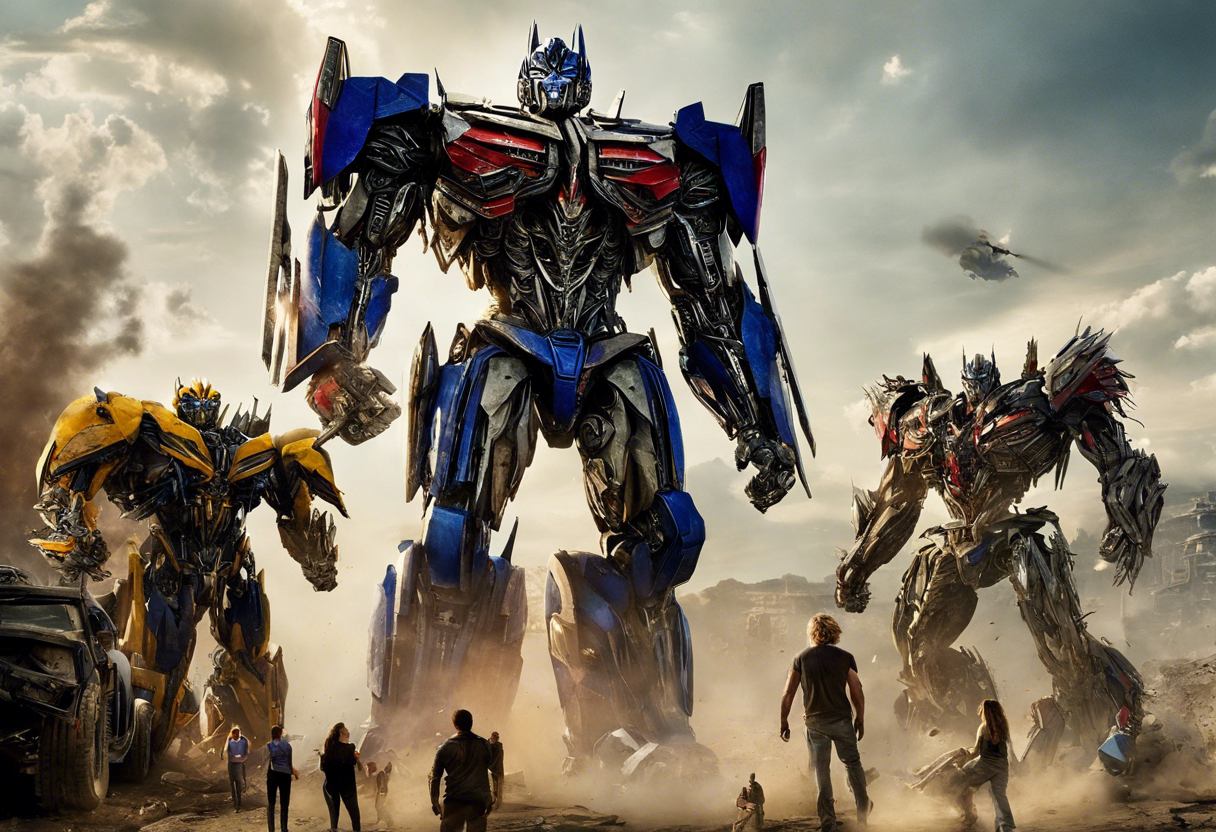Contents
Transformers: The Last Knight
Introduction
Transformers: The Last Knight, directed by Michael Bay and released in 2017, is the fifth installment in the live-action Transformers film series. The movie is based on a screenplay by Art Marcum, Matt Holloway, and Ken Nolan, and it continues the narrative thread from the previous film, Transformers: Age of Extinction. The film stars Mark Wahlberg, reprising his role as Cade Yeager, along with Josh Duhamel, Stanley Tucci, and Anthony Hopkins joining the cast.
Produced by Lorenzo di Bonaventura, Tom DeSanto, and Don Murphy, Transformers: The Last Knight premiered on June 18, 2017, at the Odeon Leicester Square in London and was released in the United States on June 21, 2017, by Paramount Pictures. What sets this film apart is its ambitious attempt to weave together historical and mythological elements with the sci-fi universe of the Transformers, making it a unique blend of action, adventure, and fantasy.
Plot Summary
The plot of Transformers: The Last Knight is multifaceted and spans different time periods. The film begins in 484 AD, where Merlin, the legendary wizard, encounters the Knights of Iacon, a group of Transformers hiding on Earth. The Knights aid King Arthur in his battle against the Saxons and gift Merlin a magical staff, which he is instructed to hide[1][2].
In the present day, the story follows Cade Yeager, an inventor and ally to the Autobots, who is given a talisman by a dying Transformer knight. This talisman sets off a chain of events as Cade is recruited by Sir Edmund Burton, an eccentric British professor, to save the world from an impending threat. The threat comes in the form of Optimus Prime, who has been brainwashed by the Cybertronian goddess Quintessa into becoming Nemesis Prime. Quintessa’s plan is to use Merlin’s staff to drain Earth’s energy core, which she believes is the ancient enemy Unicron, to restore Cybertron[1][2].
As the story unfolds, Cade, along with Bumblebee, Izabella, and her Transformer companion Sqweeks, must evade the Transformers Reaction Force (TRF) and the Decepticons. They travel to the United Kingdom to meet Sir Edmund Burton and eventually discover the location of Merlin’s tomb. The staff is retrieved, but it falls into the wrong hands, leading to a climactic battle between the Autobots, humans, and the Decepticons.
The film culminates with the Autobots and their human allies launching a final assault on Cybertron to stop Quintessa and the Decepticons. Optimus Prime, freed from Quintessa’s control, defeats Megatron, and Viviane Wembly, a University of Oxford professor, removes the staff, halting the energy transfer. The film concludes with Cybertron and Earth attached, and the Autobots leaving Earth to rebuild their home planet[1][2].
Themes and Symbolism
Transformers: The Last Knight explores several central themes that add depth to its narrative. One of the primary themes is the struggle for control and the consequences of attempting to exert absolute power. This is evident in Quintessa’s plan to control Earth’s energy and in the human military’s efforts to hunt down and control the Transformers. The film highlights how such attempts at control often lead to chaos and failure[3].
Another significant theme is the importance of unity and cooperation. The alliance between humans and Autobots is a recurring motif, showing that together, they can overcome even the most daunting challenges. This theme is symbolized through the talisman that Cade possesses, which transforms into Excalibur, a symbol of unity and power[1][2].
The film also delves into historical and mythological symbolism, particularly with the inclusion of King Arthur and the Knights of Iacon. This blend of mythology with the Transformers universe adds a rich layer of storytelling and connects the film to broader cultural narratives[1][2].
Cultural Impact
Transformers: The Last Knight had a significant cultural impact upon its release. Despite receiving negative reviews from critics, the film grossed $605.4 million worldwide, although it was not as financially successful as its predecessors due to high production and marketing costs[1].
The film’s attempt to connect with old fans by incorporating elements from the original "Generation 1" series mythology was notable. It brought major names from the Transformers lore to the big screen, appealing to a wider audience and showing that the writers had not forgotten the series’ roots[4].
However, the film’s reception was mixed, with many critics and fans feeling that it did not live up to the standards set by previous films in the series. Despite this, the film remains a part of the larger Transformers franchise, which continues to influence popular culture through various adaptations and references in other media[4].
Critical Reception
Transformers: The Last Knight received predominantly negative reviews from critics. The film was criticized for its convoluted plot, excessive length, and over-reliance on action sequences at the expense of coherent storytelling. Despite its visual spectacle and fan service, many found the film to be a disappointment compared to earlier installments in the series[1][4].
The film’s financial performance was also underwhelming, given its high production budget. It lost Paramount an estimated $100 million when marketing and distribution costs were factored in. This financial outcome, combined with the negative critical reception, marked a turning point in the franchise’s trajectory, leading to a reevaluation of the series’ direction[1].
Legacy
Despite its mixed reception, Transformers: The Last Knight remains a significant part of the Transformers franchise. It continues to inspire filmmakers and artists, particularly in the realm of sci-fi and action films. The film’s ambitious attempt to merge historical and mythological elements with the Transformers universe has set a precedent for future films in the franchise.
The legacy of Transformers: The Last Knight is also seen in its influence on subsequent films, such as Bumblebee, which served as a prequel and received more positive reviews. The film’s themes of unity, cooperation, and the struggle for control continue to resonate with audiences and contribute to the broader narrative of the Transformers series[1][4].
In conclusion, Transformers: The Last Knight is a complex and visually stunning film that, despite its flaws, adds a unique chapter to the Transformers saga. Its blend of action, adventure, and fantasy elements, along with its exploration of significant themes, ensures its place in cinematic history as a notable installment in the franchise.
References
- https://en.wikipedia.org/wiki/Transformers:_The_Last_Knight
- https://www.imdb.com/title/tt3371366/plotsummary/
- https://www.tfw2005.com/boards/threads/themes-in-the-transformers-films.1065689/
- https://tccaus.wordpress.com/2017/06/21/transformers-the-last-knight-australian-first-reaction-review/
- https://www.space.com/transformer-movies-in-order

